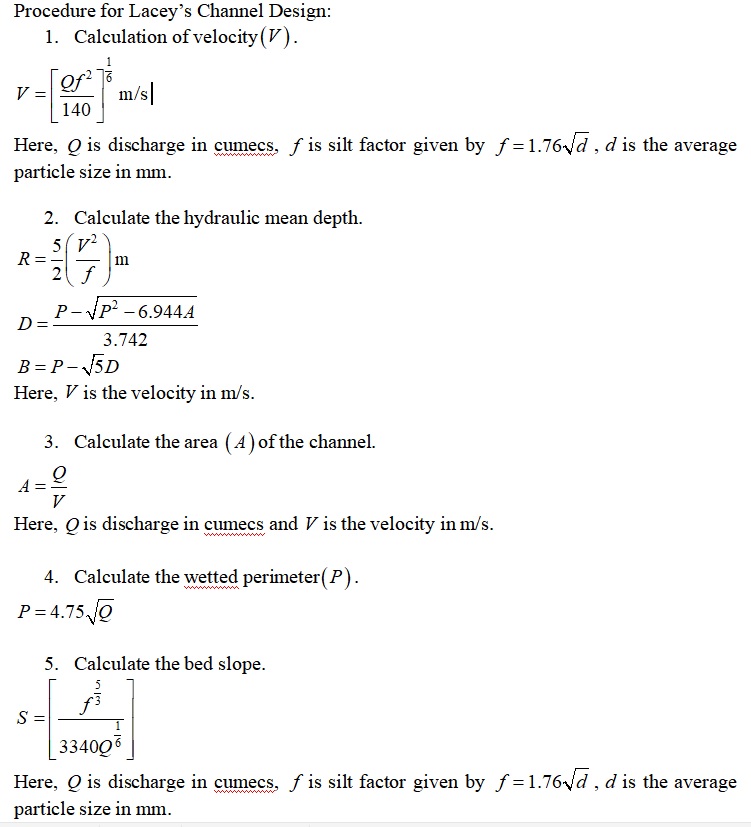This article explains regime channel, Lacey’s regime theory and classification of regime channels.
Table of Contents
What Is Regime Channel?
When a channel is neither scouring nor silting then it is known as the regime channel.

Regime channels are studied using Lacey’s regime theory. Lacey’s regime theory is also called Lacey’s silt theory.
Types Of Regime Channels
It is classified into three parts based on Lacey’s Regime theory:
- True Regime
- Initial Regime
- Final Regime
1. True Regime:
A channel is in true regime condition if the water transported and sediment is in equilibrium such that it’s neither silting nor scouring.
Conditions for True Regime:
- If the discharge is constant and flow is uniform.
- The amount of silt is constant.
- The size and type of silt are always the same.
- When a channel is flowing through a material that can be scoured easily then such soil is known as incoherent alluvium.
2. Initial Regime:
A channel is in the initial regime when the bed slope gets affected due to silting and scouring. The regime theory is not valid for the initial regime.
3. Final Regime:
When the parameters like slope, depth, etc. are varying as per the flow rate and grade of silt then it is said to be in the final regime.

Lacey’s Regime Theory

Canal Design Using Lacey’s Regime Theory
Let us consider:
Canal discharge (Q) and mean particle size (dm).
Silt factor can be calculated if we know the value of particle size. Particle size is indicated by dm.

Value of silt factor for various types of soils are shown in the image as given below.

Using discharge (Q) and silt factor (f), velocity (V) can be calculated by the formula:

After finding the velocity of canal flow, find the area of the canal by dividing discharge with velocity. We will also find the mean hydraulic depth (R) of the canal and wetted perimeter (P) of the canal.

Bed slope (S) can be find out by using following formula;

You can also calculate design discharge for regime channel if you have value of bed slope and silt factor.
Limitations Of Lacey’s Silt Theory
- Lacey did not provide a comprehensive explanation of the properties that govern the alluvial channel.
- The difference in flow between the bed and sides of the channel necessitates the use of two distinct silt factors, but Lacey only derived one.
- The suitability of the semi-elliptical shape proposed by Lacey as the ideal channel shape is open to debate.
- Lacey’s equations did not take into account the concentration of silt.
- Lacey did not consider the attrition of silt particles in his analysis.
- Lacey did not provide clear definitions for the silt grade and silt charge.
